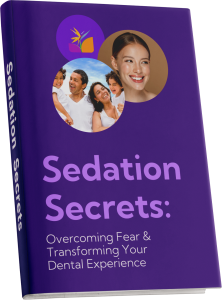Sedation Dentistry at Miami Dental Sedation Spa
At Miami Dental Sedation Spa, sedation dentistry is an integral part of their comprehensive approach to patient care. This practice employs various sedation techniques to help alleviate anxiety and discomfort during dental procedures. Many individuals experience fear or apprehension when visiting the dentist, which can lead to avoidance of essential dental care. The dental professionals at Miami Dental Sedation Spa understand these concerns and utilize sedation dentistry to provide a more comfortable and relaxing experience for their patients. Whether it’s mild sedation for routine cleanings or deeper sedation for more extensive procedures, the team tailors their approach based on individual needs and preferences.
The spa-like environment at Miami Dental Sedation Spa enhances the experience by providing a serene atmosphere where patients can feel at ease. The skilled practitioners prioritize safety and have extensive training in administering sedation, ensuring that patients remain relaxed but awake or comfortably unconscious depending on the level of sedation chosen. This dedicated focus on patient comfort, combined with state-of-the-art technology and personalized care, makes Miami Dental Sedation Spa a leading choice for those seeking to overcome dental anxiety. With their commitment to improving patient experiences, they aim to transform the perception of dental visits into a positive and stress-free experience.
What is sedation dentistry?
Sedation dentistry is a specialized field within oral care designed to ease anxiety and discomfort for patients undergoing dental procedures. Using various sedative techniques, dental practitioners can create a calm and relaxed atmosphere, significantly alleviating the fear that often accompanies visits to the dentist. This approach allows individuals who might typically avoid essential dental care—due to anxiety, a low pain threshold, or past negative experiences—to receive the treatments they need without distress. Common methods of sedation include nitrous oxide (commonly known as "laughing gas"), oral sedatives, and intravenous (IV) sedation, each offering different levels of relaxation and patient comfort.
The benefits of sedation dentistry extend beyond merely easing anxiety. It enables dentists to perform more complex procedures in a single visit, as patients are generally more cooperative and relaxed under sedation. This can improve dental health outcomes and reduce the number of visits required for treatments. Moreover, sedation dentistry is suitable for patients of all ages, from children to adults, making it a comprehensive option for those with varying levels of apprehension regarding dental work. By prioritizing patient comfort and safety, sedation dentistry enhances the overall experience, ensuring that individuals leave the dental office feeling more at ease about future visits.
Who needs sedation dentistry?
Sedation dentistry is a specialized approach designed to help patients who experience anxiety or fear associated with dental visits. It can be particularly beneficial for those who have had traumatic past experiences in dental settings, individuals with a strong aversion to needles or the sounds of dental instruments, or patients who struggle with a low pain threshold. Furthermore, people with special needs, including those with developmental delays or cognitive impairments, may also find sedation dentistry to be a more comfortable option. By employing various forms of sedation, from minimal to deep sedation, dental professionals can create an atmosphere that alleviates apprehension and allows patients to undergo necessary procedures without distress.
Moreover, sedation dentistry is often recommended for individuals who require more extensive dental work, such as those needing multiple extractions or complex restorative procedures. For these patients, extended periods in the dental chair might be challenging, both physically and emotionally. Sedation dentistry not only helps to minimize discomfort during the procedure but also allows dentists to complete treatments more efficiently within a single visit. Ultimately, sedation dentistry serves as a valuable resource for a wide range of patients, ensuring that they receive the dental care they need while maintaining a sense of calm and comfort throughout their experience.
What types of sedation are used in dentistry?
Oral conscious sedation
Oral conscious sedation is an established technique used in dentistry to help anxious patients undergo necessary procedures with minimal discomfort and stress. This method involves administering a sedative medication orally, allowing individuals to remain awake and aware during their treatment while significantly reducing anxiety. Patients typically receive the medication about an hour before their appointment. This approach not only enhances patient comfort but also enables dentists to perform more complex procedures without the need for intravenous sedation or general anesthesia.
One of the key benefits of oral conscious sedation is its convenience and ease of use. Patients can take the prescribed sedative in the comfort of their own home, eliminating the need for needles and intravenous lines. The sedation allows patients to maintain some degree of responsiveness. Following the procedure, patients are still advised to have a responsible adult accompany them home due to the lingering effects of the medication. Ultimately, oral conscious sedation provides a safe and effective solution for overcoming dental anxiety.
Nitrous oxide
Nitrous oxide, commonly known as "laughing gas," is a colorless and odorless gas often utilized as a sedative and analgesic, providing patients with a sense of relaxation while diminishing their perception of pain. Its rapid onset and short duration make it an ideal choice for outpatient dental procedures where patients may experience anxiety or discomfort. The gas works by inhibiting certain neurotransmitters in the brain, leading to its characteristic calming effects. One major advantage is that its effects wear off quickly, so most patients can safely drive themselves home afterward.
Intravenous (IV) sedation
IV sedation provides immediate relaxation as the medication is delivered directly into the bloodstream. This method allows for precise control of sedation levels, making it ideal for longer or more complex dental procedures. IV sedation is highly customizable and allows patients to remain in a deeply relaxed state, often with little memory of the procedure. Recovery is usually swift, but patients should arrange for transportation home.

Procedure Details
What happens before sedation dentistry?
Before sedation dentistry, patients undergo a thorough consultation to review medical history, medications, and any prior experiences with sedation. This helps the dentist tailor the sedation plan to ensure safety and comfort. Patients may receive instructions regarding fasting and must arrange for someone to accompany them to and from the appointment if necessary.
What happens during sedation dentistry?
During sedation dentistry, the chosen sedative is administered, and the patient is closely monitored for vital signs and comfort levels. Whether through nitrous oxide, oral sedatives, or IV sedation, the goal is to provide a calm, relaxed experience while allowing the dentist to perform necessary treatments effectively.
What happens after sedation dentistry?
After sedation dentistry, patients may feel groggy or drowsy as the sedative wears off. It’s important to rest, avoid driving, and follow post-care instructions provided by the dental team to ensure a smooth recovery.
Risks / Benefits
What are the advantages of sedation dentistry?
Sedation dentistry helps reduce anxiety, allows for longer treatments in a single visit, minimizes discomfort, and enables patients with special needs to receive essential dental care.
What are the risks or complications of sedation dentistry?
While generally safe, risks can include allergic reactions, over-sedation, respiratory issues, or prolonged drowsiness. Proper screening and monitoring minimize these risks significantly.
Child sedation dentistry side effects
Children may experience temporary drowsiness, nausea, or irritability, which typically subside as the sedative wears off. Proper dosing and monitoring are essential for safety.
Can I have sedation dentistry if I’m pregnant?
Most dental professionals advise against sedation during pregnancy, especially in the first trimester. If necessary, minimal sedation options like nitrous oxide may be considered after consulting with a medical provider.
Recovery and Outlook
What is the recovery time?
Recovery time varies depending on the type of sedation used. Most patients feel normal within a few hours but should rest for the remainder of the day.
When can I go back to work or school?
Most patients can return the following day, depending on the sedation used and their individual recovery rate.
When can I drive?
Driving is not recommended until the sedative effects have fully worn off, usually the next day for oral or IV sedation.
When can I eat?
Patients can usually eat once they feel fully alert. It’s best to start with soft foods if dental work was performed.
Conclusion
Sedation dentistry at Miami Dental Sedation Spa is more than just a solution for dental anxiety — it is part of our mission to provide compassionate, patient-centered care where your comfort, safety, and well-being come first. Whether you need a routine cleaning or a more advanced procedure, our team is dedicated to creating a positive, stress-free experience. We proudly follow the recommendations of respected organizations such as the American Dental Association, so you can feel confident that your care meets the highest standards of safety and quality.
For more information about how sedation dentistry can help you or a loved one, we invite you to download our free guide, Sedation Secrets. This detailed PDF explains everything you need to know about sedation options, how to prepare, and what to expect before, during, and after your visit. Take the first step toward a calmer, more comfortable dental experience today.




